MATERIA MEDICA-ENORMOUS GAMUT OF HUMAN SUFFERING
The study of Materia medica encompasses, within its domain, the study of a human being in totality. It encompasses the study of perceiving a Man in all of his fields, dimensions and ramifications. The study of a human being can’t be a monotonous subject because human personality is multidimensional, manifold, sensitive and vibrant and gives out so many colors and hues that its study becomes a highly fascinating one.
Each remedy is a treasure of thousands of symptoms and there are thousands of remedies, which, collectively, represent the vast gamut of human suffering. The enormous number of symptoms at emotional, intellectual and physical levels coupled with clinical information forms an unending resource for a physician. When we utilize this resource by applying various scientific faculties, each homoeopathic remedy, especially a polychrest one, forms a portrait of a full-blown human being and the study of this portrait is what we label as a concept of ‘living Materia medica.’ Each remedial portrait so formed talks, vibrates, throbs and shows all human emotions and behavioral responses.
Within the span of more than 200 years of homoeopathic practice, enormous work has been added from various sources. Apart from clinically verified data which now outweigh the proving data, we find additions from physical appearance (make-up), attire, craving for a particular object, color or issue, linking of gestures which have been observed by a physician in his clinic and the behavioral responses which the patients (their counterpart drugs also) exhibit and the research in various fields which is developing by leaps and bounds.
UNDERSTANDING BASIC MODES
Body language is a multi-dimensional study. It involves every organ of the body and its movement. More than 7, 00000 nonverbal signals are produced by the human beings. Hence, it is necessary to categorize them for the sake of practical implication.
I have found John Mole’s description of the basic modes of body language extremely useful in clinical practice. I have tried to explain these basic modes in the context of homoeopathic practice.
Remember that each mode contains all the miasms, but we have to correlate the associated clinical condition as well as the gravity of expressions of mode to define the preponderance of a miasm.
There are four basic modes – Open, Closed, Forward and Back.
1. Open: These include the gestures indicating ‘open’ attitude-open palms, open arms, face-to face body direction, broad smile etc. Extroverted persons show this mode more. Usually physical gestures like crossed arms or crossed legs are minimal or absent. However, some patients have the habit of talking with closed gestures, although they are open in conversation.
Fig. 2 Broad smile
2. Closed: Most common gestures and postures which fall into this category are crossed arms, crossed legs, body turned away etc. Introverts fall here more. Flexion withdrawal is a good example of a closed posture.
Fig. 3 Crossed legs
3. Forward: This category consists of postures that indicate activity in communication. He leans forward, gets firmly planted on the ground; he points towards you when he actively accepts or rejects a message; he also shows strong eye-to-eye contact and may use loud voice. The issue here is to render the message and not to keep it reserved or concealed.
4. Back: In this category we find leaning-back postures, staring at the ceiling, doodling or cleaning one’s glasses, signaling whether the person is passively absorbing or ignoring the message.
There are four combinations of posture groups in four basic modes, as follows.
Fig. 5 The Responsive mode
THE RESPONSIVE MODE (BETWEEN OPEN AND FORWARD)
There is an active acceptance. A person is eager to listen and converse with others. He should be watched out for such gestures as leaning forward, open arms and palms, open legs, a sprint position, head nodding, or hands flat on the table. In this mode a person has a good reservoir of energy and he uses it by engaging himself in the immediate surrounding. The orientation of a person is extroverted and he gives out multiple open gestures.
The patients of psoric (and tubercular too) miasms chiefly reflect the responsive mode of behaviour. These miasms are characterized by hypersensitivity and overactivity, especially at the emotional level. During interrogation, when a physician touches their emotions, they start exhibiting through overt emotions. The basic emotions of anger, love, fear, anxiety, jealousy, sadness etc. are exaggerated. In the psoric reaction, the energy, in a usual pattern, doesn’t go wayward. In the tubercular expression, however, it can turn into non-rhythmic response. The physician should see in which direction the speech of a patient as well as the gestures and postures are moving and why.
The motive in responsive mode is to concentrate on an interrogator and respond according to the need of the data. The issue is mainly concerned in orienting the energy towards the gain and it is to be noted that many greedy and egocentric patients do exhibit the responsive mode.
Cues of the responsive mode
- Leaning forward
- Maintaining good eye contact
- Using hand gestures often to emphasize
- Any type of fidgeting
- Frequent nodding of head
- Tuning between the questions and answers in terms of speech
- Usually unfolded arms and legs
- Open hands with palms visible
- Moving closer
- Arms gently crossing lower body
- Repeated glances
- Warm, relaxed smile
- Firm, sometimes prolonged handshake
THE REFLECTIVE MODE (BETWEEN OPEN AND BACK)
A person shows interest and he is attentive but he may not have active acceptance. Frequent body language cues encountered in such mode are: tilted head, smiles, plenty of eye contact with frequent blinks, or looking up and to the right, and head nods. The person may sit with legs crossed in figure-4 position or stand with arms behind his back. He may use mouth-feeders as the frame of his glasses or a pencil or he may stroke his chin, slapping the head, hand on cheek and index finger pointing vertically etc.
As the name suggests, the basic process in this mode is that of reflection i.e. entering within the self for the sake of revealing the inner dimensions. Instead of the extroverted response, which we get in responsive mode, we get the introvert reaction. The process of introspection is at the base of this mode. The energy pattern may be the same or slightly reduced. The person goes within, takes the pause and brings onto the surface the information hitherto not revealed. He scratches the memory box so that the remote information of the past comes to the forth.
Evaluation and judgment play a vital role in reflective mode. A question is first judged, analyzed, evaluated and then answered and while this whole process is executed, the body under the domain of non-verbal brain represents a number of cues and then the spoken words get surfaced. Reflective mode is also followed by a cunning person, who may take a pause, show a cue of reflective mode and act deceitfully. Here co-relating the lie behavior described elsewhere in the book would be helpful in defining the real stuff. A secretive person may also use the reflective mode for the sake of hiding the information.
The reflective mode manifests sycotic miasm. Going into introspection, taking a pause, answering slowly and remaining in a shell as if encapsulated are characters of reflective mode that point toward sycotic miasm.
Cues of the reflective mode
- Gazing steadily at an object
- General stillness
- Tilting or cocking of head
- Furrowing the eye-brows
- Folding the arms and staring into space
- Leaning back in chair
- Looking upward
- Scratching the head
- Resting the chin on the hands
- Head shaking
- Turning of the corners of mouth
- Exhaling through the teeth
- Evaluation gestures
Fig. 8 Supporting the chin
THE FUGITIVE MODE (BETWEEN CLOSED AND BACK):
There is an attempt to escape, either physically by leaving the place or mentally into boredom. Clear clues will be the blank stare, frowning, clenched hands and slumped posture, legs crossed at the knees, flexion withdrawal foot tapping, looking around, head down, moving back, buttoning jacket and feet pointing to the exit.
Fig 9: The gestures of fugitive mode
The fugitive mode reflects the disinterest, apathy, rejection or depression. If a physician is dull and unable to infuse inspiration in the patient, fugitive mode is often the result. Many melancholic, depressed and anxious patients manifest the gestures of fugitive mode. The fugitive mode is a good parameter of assessing the low energy level of the patient.
Miasmatic assessment of an individual exhibiting this mode mainly points to a deep sycotic miasmatic process unlike the earlier reflective mode. Their energy level is low because it has been drained and they have become more passive and now they are in fugitive mode. This is a kind of a fag end. Remember, tubercular and syphilitic miasmatic patients may also present the fugitive mode when their strong pathologies drain their energy.
Cues of the fugitive mode
- Glancing often at watch or other objects
- Sighing
- Yawning
- Fiddling with pen, eyeglasses, paper etc.
- Doodling
- Shifting weight
- Rolling the eyes
- Stretching
- Picking at fingernails or imaginary lint
- Pointing the body away from the other person
- Low tone of voice
- Relaxed, slumped or slackened body
- Downcast eyes
- Inattention to hygiene and dress
- Becoming silent
- Coughing nervously
- Clearing the throat
- Wringing the hands
THE COMBATIVE MODE (BETWEEN CLOSED AND FORWARD)
There is active resistance and the obvious pointers to it are the gestures like staring, frowning, pointing, tapping a finger and / or foot, leaning forward in more intensity, or hands on hips. If the person is lying, he will cover his mouth, touch his face, pull his ear, glance at you, shift in his seat, keep his eyes on the floor or look down and to the left. Note that in reflective mode also there may be lying but it is associated with low energy pattern and hence there are fewer movements. In combative mode, however, lying is associated with exaggerated movement of gestures.
Power displays like pointing the index finger, forming a fist, dominant palm position are some of the prominent gestures of combative mode.
The combative mode is an exaggerated response of antipathy, hostility, negativity, aggression, defiance etc. against what is going on around him. It may be the result of pent up anger because of his illness, or out of causes like being offended or rejected. The inborn state of high self-image and aggression predispose a person to adapt to this mode and when tender area is probed and pricked, the combative mode is exhibited.
The combative mode commonly represents tubercular and syphilitic miasm. These miasms make a person agile and overt. He can’t harmonize the energy and it bursts out. The physician should keep a watch on modulations of voice in order to determine the state of combative mode. Transient outbursts, situational in nature, represent psoric reaction, but this psoric reaction is controlled. In tubercular and syphilitic miasms, the reaction is uncontrolled. The patients in combative mode are sensitive in their pride and they get hurt easily. There is hypertrophy of ego response and they go ahead with their opinions and dogmatic views. They are self-opinionated people and are not ready to compromise. Often, the medico-legal issues get developed due to exchange of hot arguments.
Cues of the combative mode
- Hands on hips
- Redness of face
- Short or rapid breath
- Frequent repetition of certain phrases
- Rapid and loud speech
- Rapid body motions
- Locked jaw
- Tightly closed lips
- Scowling
- Stiff, rigid posture
- Clenched fist
- False, sarcastic laughter
- Frequent, exaggerated use of pointers
- Pouting of lips
- Firm handshake
- Strong eye contact
The physician should not add fuel to the fire and should try to soothe the patient by his polite behavior.
Fig. 10 The Combative mode
If a homoeopath keeps in mind these basic modes and applies them correctly, it is easy to understand the utility of body language. The remedies could be categorized for the sake of their application. But one should bear in mind that the importance of understanding the mode of a patient is a crucial factor, it should define the personality, it should assist him in exploring the inner self in an unambiguous and convincing way and it should be consistent in varying situations.
Remember that a patient may present all the modes in the interview. Study the mode with three questions-which mode is the crucial one, how it is presented and why it is presented.
Remember, don’t be after shortcuts.
LINKING REMEDIES WITH BASIC MODES
Some polychrest remedies are presented in relation with basic modes. The dispositional characters of the remedies define the relationship.
EXPLANATION OF REMEDIES OF THE RESPECTIVE MODES
1. ARGENTUM NITRICUM
Fig. 11 ‘Time sets me in motion’
Arg-n. represents the central theme of kineticism. The words like Agility, Momentum, Roaming, Vagrant etc. define the energy pattern of Arg-n. He is always on the move, restless and agitated. He, however, can’t coordinate the energy and he becomes crazy. His whimsical and bizarre nature should be understood from the pattern of in-coordination. The most pronounced emotion in Arg-n. is anxiety and confusion resulting from it. The state of anxiety assumes the character of panic, phobic reaction and a trapped state of the mind. The feeling is that all exits are blocked and there is no way out.
With this energy pattern, it is likely that Arg-n. will enter in the clinic with rapid walking and will begin his history in a responsive mode. He will be eager to talk with the physician. He will have a rapid speech and he will answer the question of a physician even before it is completed. There may be trembling of tongue and hands. His face will be covered with the veil of anxiety and will make his attendants to open the door and windows of the consulting room if at all they are closed. He feels to go in open air and to move about. He will assume his sitting posture by leaning forward and will never be at rest. He will always be in a hurry to go out which is reflected in his way of sitting on the edge of the chair. Most of the time he will be in a responsive mode but as he suffers from weakness of memory and confusion of mind, he may also express the reflective mode of body language in a short way. It is less likely that Arg-n. will project the fugitive mode – between back and closed. Arg-n. patients can also show the combative mode – between forward and closed as they are eccentric and whimsical.
Arg-n. is one of the liars and inherent lie detector machine will represent this through various gestures before the astute homoeopath.
2. CARCINOCINUM
Carcinocinum revolves around the core of ‘high sense of responsibility, sincerity and honesty.’ He chiefly represents responsive and reflective modes in the interview. “I must give hard facts and must not lie”. He begins with a responsive mode and the interview usually heads smoothly, often changing to reflective mode. He is analytical and frank in speech and doesn’t want to hide information. Evaluation gestures are frequent and body language synchronizes well with the verbal language.
Carc. enters in the clinic with a serious look. His dress is clean, manners are appropriate and he is well groomed. The face is like that of an angel, voice is soft and eye expressions are innocent. He can be tense too, given his anticipatory anxiety.
There are some Carc. patients who are depressed and have developed suicidal disposition and they may represent fugitive mode and there are some Carcinocinums who are rebellious and can represent combative mode.
BODY LANGUAGE OF CARC. IN A NUTSHELL
- Impression of being polite, smiling, mild, gentle and soft; tidy
- Impression of being talented
- Frank (open, simple, transparent), yet unable to cry
- Consciousness increased- startling, sharp
- Reading books of mysticism, spiritualism, medicine etc.
- Answers monosyllable, hastily
- Sighing while talking or weeping
- Nervous tics: grimaces, blinking of eyes, involuntary motions of hands, tapping the skull with finger-tips, biting of fingertips and nails, tears the skin around nails, bizarre antics, repeats actions
AMBRA GRISEA
Ambra grisea suffers from atrophy of ego. Ambr. is a combination of delicacy, timidity and bashfulness. A neurotic individual who has lost the ‘go’ (energy) of life and has become apathetic and passive. A worn out individual, who has become a cocoon and prefers to remain in his shell.
What can be the body language of a person with nervous breakdown? ‘Inhibition’ is the right word to describe the essence of Ambr. Hence he is close with his trunk, arms and legs crossed and he has poor eye contact. He feels embarrassed in the crowd. He can’t pass urine in the presence of others. Ambr. is a serious individual and he is averse to laughing. There is also other side of Ambr. – he jumps from one subject to another, never waiting for the first question to be answered, a kind of chaotic stupidity.
Fig. 14 Embarrassed
Ambr. will be less in responsive mode and unlikely to be in combative mode. The choreography will be mostly in reflective and fugitive modes. The consistent pattern will be more of fugitive type. There is a strong aggravation from conversation and this is at the base of Ambr. as far as fugitiveness is concerned. He can’t sustain the heavy conversation and wants to close off.
CUPRUM METALLICUM
Rage, competitiveness and maliciousness form the essence of Cuprum met. He always wants to be the first. He is a man of tremendous energy that explodes into spasms, tremors and convulsions. The mind of Cuprum also speaks the same language of energy through emotional turbulences. There is a proving symptom, ‘uses words not intended’. This sentence indicates that he can’t control his emotions. One more symptom, ‘sense of losing consciousness’ further validates the same theme. The proving has yielded a delusion that he is a general; thinks himself a person of rank. Bellowing; attacks of rage; wants to bite bystanders. This is hypertrophy of ego response. Cuprum likes to imitate others and also do mimicry. There is malicious motive in doing mimicry of others and he enjoys doing so. There are grimaces and foolish gestures.
It is interesting to study fears of Cuprum There are multiple fears: of company, of everybody who approaches him, of death, fear things will catch fire, fear must thread lightly or will injure himself, of falling, of strangers etc. Cuprum is one of the remedies for complaints from fright. With these fears, there is a symptom, desire to hide on account of fear. He sees spectres, ghosts and spirits. These fears indicate atrophy of ego and the body language mode will be fugitive.
Cuprum will, however, manifest combative mode more often with respect to the reservoir of energy and its speed. He will pose in a fugitive mode while narrating his fears and while expressing anger, he will assume a combative mode. He may change the modes too. The proving of Cuprum shows, yielding disposition alternating with headstrong attitude (obstinacy).
Important body language cues of Cuprum met:
- Weeps violently
- Convulsive laughter
- Loquacious
- Restless; tossing about
- Crying like a child
- Obliged to think for a long time before answering
- Bellowing
- Weeping alternating with queer antics
- Ridiculous or foolish gestures
- Grimaces
- Spits in faces of people
- Bashful timidity
Fig. 15 Cuprum manifests misdirected, misplaced energy
CARBO-VEG
Stasis and indolence coupled with sensitivity of mind typify Carb-v. Slow thinking, dejected feeling and indifference are marked and on this essence it is easy to categorize the modes of reflective and fugitive.
Carb-v. is a person with slow ideas. He has also confusion of ideas. There is aversion to thinking and mental weakness. There is loss of memory; for what he said just, or for words that he heard. In the interrogation, Carb-v. often goes in reflective mode to recall the past from the memory box. He may be a liar and his body language cues will reveal his lying attitude. He becomes restless in the company. There is timidity, irresolution and embarrassment in society. He becomes timid while appearing in public. In the interview, Carb-v. represents more reflective and fugitive modes. The devitalized state of economy is also responsible for fugitive mode.
Fig. 16 Weakness of attitude becomes the weakness of character
TARENTULA HISPANICA
(From A Select Homoeopathic Materia medica Vol. III, unpublished)
Tarent. is all commotion; always on the go and restless, even without any purpose. A tall talker, he earns by befooling and amusing people. He wears the attire, which is attractive and gaudy. He is charmed by colors like blue, green and red. Drives restless insanity. Cheerful; buoyant. He likes to show off. Erratic, unreliable and undependable. Subtle cruelty of a smiling wizard. Foxy. Sly. Elusive. Tricky. Highly ambitious, which never thrives without selfishness, of which there is here a full fare.
Music lovers or masters of elegant diction (like Lachesis). Most-dishonest, sweet – tongued – saccharine – cunning and selfish. Their laugh is peculiar: sardonic, mocking, forced… Lavish…
CONCLUSION
The categorization of body language signals into the modes described in this chapter is rewarding from its applicability. The pattern of energy which an individual exhibits along with miasmatic assessment makes the theme of body language much more approachable. Observe carefully your patient’s gestures and postures, not in isolation but in totality. Try to look for the patterns. Define the context. Define the prominent mode your patient was in for most of the time. Then enter into the persona part of the individual. Take the appropriate rubrics from the Repertory of body language and be pervasive in giving the similimum.
REFERENCES
1. Body Language and Homoeopathy, Ajit Kulkarni, B. Jain Publishers, New Delhi
2. A Select Homoeopathic Materia Medica, P.I. Tarkas & Ajit Kulkarni
3. Brian, S., 2004, Body Language, Rohan Book Company, New Delhi
4. Allan + Barbara Pease, 2004, The Definitive Book of Body Language, Orion Books Ltd., London
5. Decoding body language, 1999, John Mole
*******
Information about book
· Name of the book: Body Language and Homoeopathy
· Author: Dr. Ajit Kulkarni M.D. (Hom.)
· Published by: B. Jain Publishers, New Delhi
· Pages: 800
· Price: Rs. 799/- 50$
· Get more information at www.ajitkulkarni.com

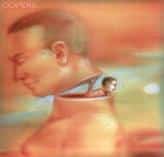
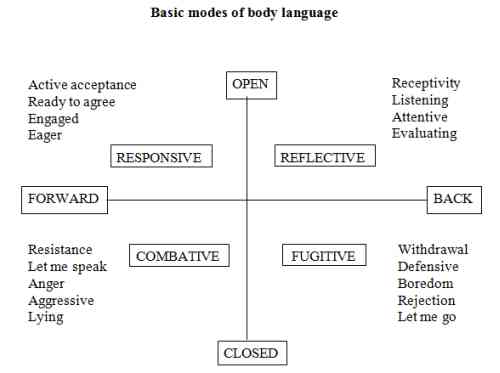

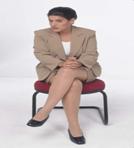
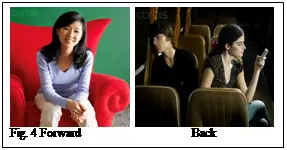

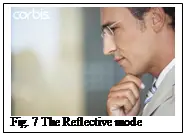
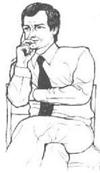


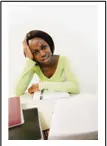
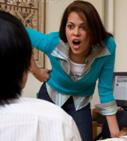


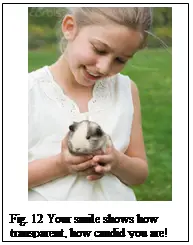
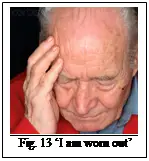





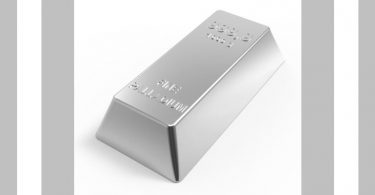
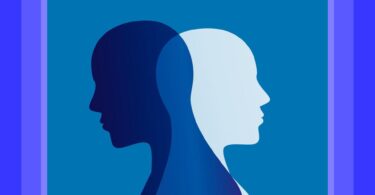
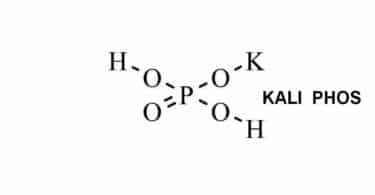

I have gone through the book meticulously and it is really amazing , innovative and recommended for all serious reader of homoeopathic profession.
This is an excellent article
This is a good article, thanks to Dr Ajit Kulkarni.
Living beings can be best understood by their responses to an event.Undestanding humen beings by dispositional features is a classic.Expressions to understand through body language is a masters approach.What a genius approach.One more pearl in the field of homoeopathy” DR AJIT KULKARNI SIR”.Thanks
Gesture is most important for homopathic tretment-case takinging.this is not usefull for patient but only for homoeopathic physician
very very thanks to writer, who provide us valuable obsorvations of patients for practioner homeo-physicians. it will help as a aggressive catalyst in our practice..
once again very very thanks..
umanath tewari, lucknow, india dated 13.11.2013
I am still a student in homeopathy. I now understand the importance about observation the body language of the patient after reading your article
Thank you much Dr. Janit Kulkarni. Your article is very interesting. I hope to come one day to that wisdom you already acquired.